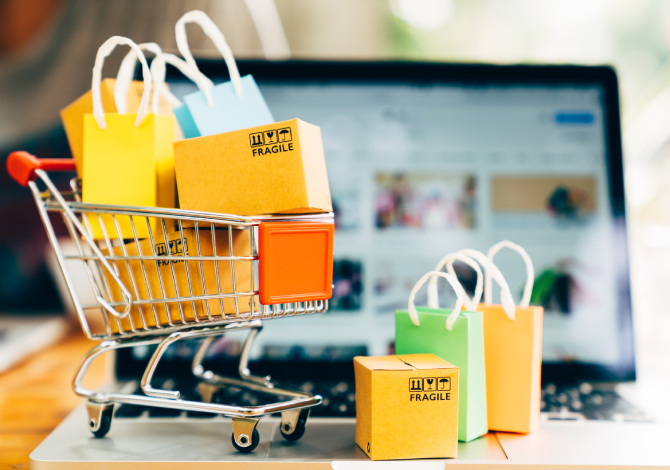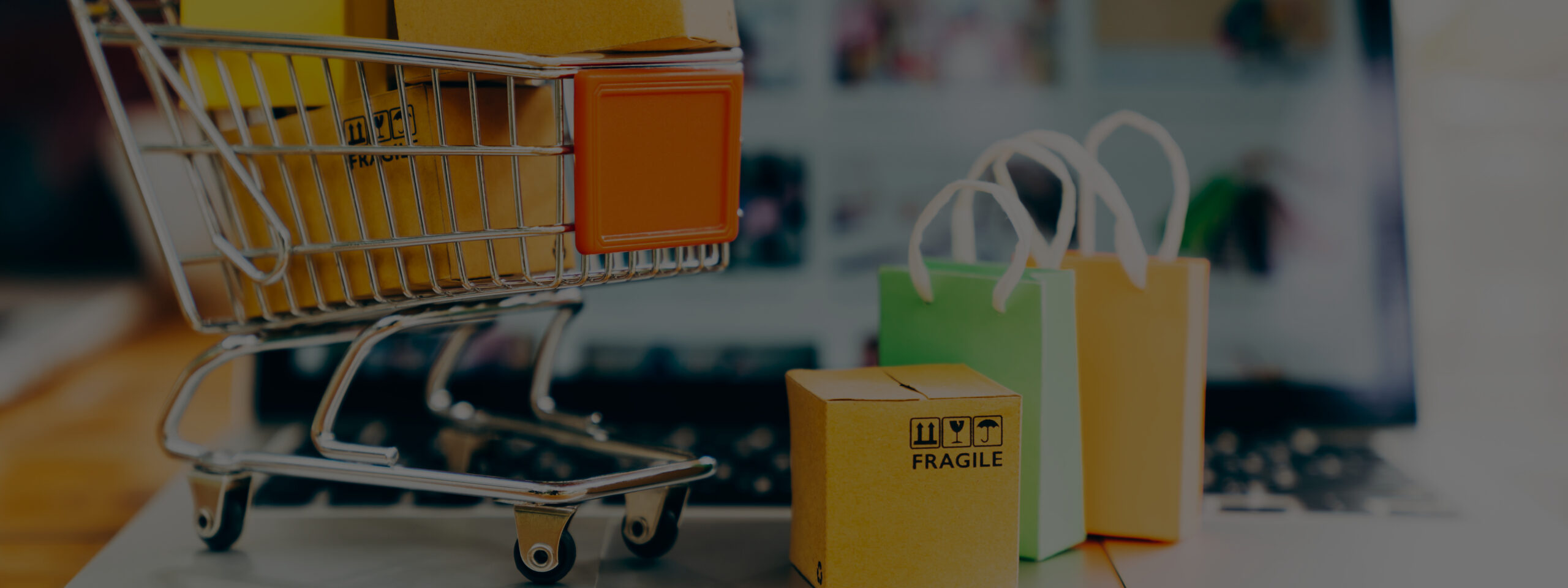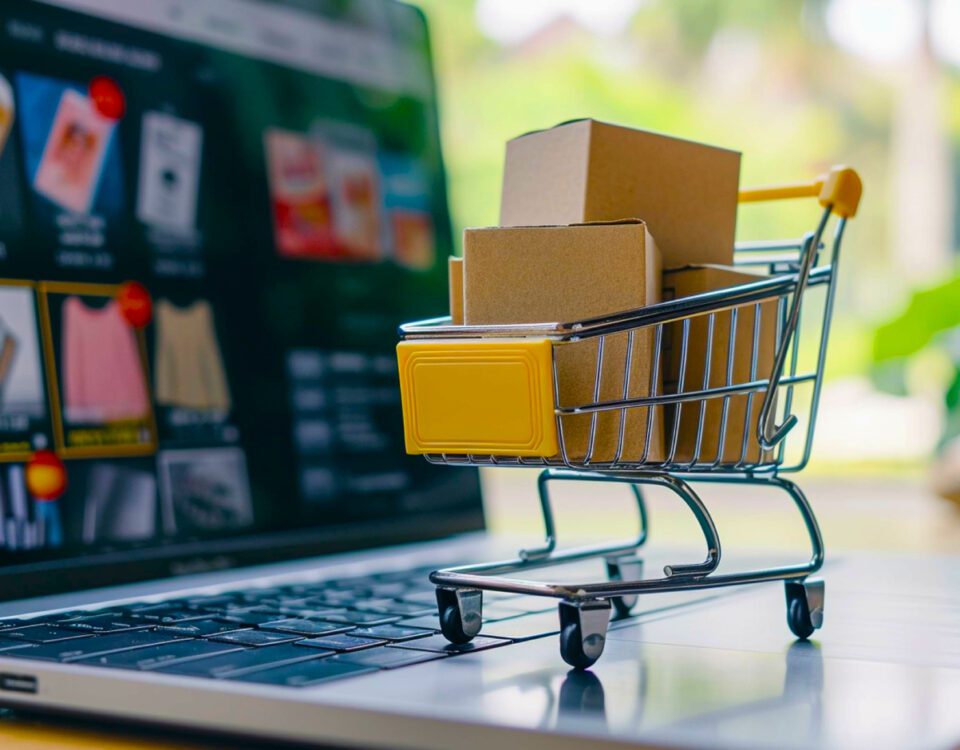Share
A pivotal part of working in social media marketing is keeping an eye on upcoming trends and predicting what the future holds for brands, industries and platforms. When it comes to eCommerce, possibly the fastest evolving market, new opportunities for businesses to generate revenue are constantly emerging - in fact, in 2020, retail eCommerce sales grew by 27.6%, reaching a total of $4.28 trillion worldwide, and this figure is expected to increase by another $1 trillion by 2025.
Undoubtedly accelerated by the pandemic, which has caused people to adapt to shopping online instead of in physical stores, eCommerce has also made it easier for companies to sell their products and services to international customers, meaning businesses are no longer limited to domestic sales. Sustainable hydration brand LARQ, for example, reported seeing an 80% increase in conversions in just three months following its launch of a multi-region storefront and multi-currency options on its website.
What else can we expect to see in the eCommerce world over the coming months and years? We’re taking a look at some key projections below.
More Personalisation
Consumers are increasingly seeking out personalised shopping experiences, with 36% of them saying that retailers need to offer more personalisation, and 66% expecting the companies they buy from to understand their specific needs and preferences. Personalisation helps people feel like they really matter to a brand, which ultimately makes them more likely to stick with that brand - 70% of consumers say that their loyalty is directly impacted by how well a company understands their individual needs and 84% say they’re more likely to buy from businesses that treat them like a person, not a number.
Here’s some of the most useful data to track in order to be able to offer personalisation:
• The last time the customer made a purchase
• The types of items they usually buy
• Which product categories they spend the most time browsing
• The paths they typically follow when navigating your website
According to Shopify, 42% of brands plan to provide their customers with bespoke product recommendations through tools like quizzes, custom mobile apps and first-party or third-party behavioural data throughout 2022 and beyond. Is yours one of them?
Social Commerce Will Continue to Grow
As outlined in our previous blog post, advertisers anticipate spending $56 billion to promote their products on social media this year, with major platforms such as Facebook, Instagram and TikTok now hosting a wide range of shopping features, advertising tools and direct checkout options to facilitate sales. eMarketer estimates that in the US alone, social commerce sales will double between now and 2025, eventually totalling more than $79 billion.
79% of people are now more likely to shop on social platforms than they were a year ago, demonstrating the growing power of social storefronts. Instagram is currently the leader of the pack, with 64% of consumers shopping from the platform in the last year, followed by Facebook (45%) and TikTok (24%). Pinterest shopping is also on the rise - it has seen a 356% increase in shopping in the past 12 months, placing it just behind TikTok in terms of percentage growth.
Live Shopping on Social Media
Live shopping is the next big thing in the eCommerce space. It’s projected to generate nearly $25 billion by 2023 and it’s already seen a huge level of success in China, where in 2019 alone, 37% of online shoppers purchased items from live streams. According to McKinsey Insights, if this is an indication of its upcoming global impact, live commerce sales could account for as much as 20% of all eCommerce by 2026. What’s more, a massive 81% of eCommerce businesses are planning to either increase or maintain their investment in live shopping throughout 2022.
The rising popularity of this tool most likely comes as a result of it being the closest alternative to a traditional in-store shopping experience. Viewers can watch product demonstrations in real-time and see their favourite brands and creators share information and tips about the items featured in each broadcast, giving a clearer idea of what they can expect and therefore making it much easier for them to decide whether to purchase, especially when compared with a single static image on a website.
Learn more about live shopping on TikTok specifically in this podcast episode.
Influencers and Brand Ambassadors
More than ever before, consumers want to see authentic, relatable content regarding the products and services they’re thinking of buying - that’s why influencers are rapidly gaining popularity in the eCommerce world. Reading a positive description of a product online is one thing, but seeing it being used by a real person and hearing their thoughts on it is much more impactful. In fact, around 63% of people trust what influencers say about brands much more than what brands say about themselves in their own advertising.
In particular, micro-influencers (those with 10,000-100,000 followers) and nano-influencers (those with 1000-10,000 followers) are set to gain traction over the coming months, due to the closer relationship they have with their audiences than macro- and mega-influencers (those with 500,000-1 million followers and 1 million+ followers respectively), who are unable to connect with their fans on the same personal level due to their sheer volume.
We can also expect to see a shift towards long-term influencer partnerships rather than one-off collaborations, as explained below by two experts in the field:
• “It’s not just a functional one way relationship, instead it’s a long-term developed relationship.” - Justin Levy, Director of Social & Influencer Marketing for Demandbase
• “You’re going to see more, longer-term partnerships where an influencer is locked in to a brand over the course of a year or multiple years.” - Jason Falls, Senior Influence Strategist for Cornett
Live Chat for Customer Service
Live chat is already the number one service choice for shoppers between 18 and 49 years old and around 73% of customers find it the most satisfactory form of communication with a company, so it’s no surprise that the global live chat market is projected to reach $987.3 million by 2023. It’s a great way to provide real-time support to shoppers while they’re browsing your website and can prevent the frustration that comes from having to wait for an email response or phone call, often resulting in cart abandonment.
Want to offer live chat on your brand’s website but don’t have time to handle your incoming messages? Learn how our dedicated team of customer service experts can help here.
Shopping on All Devices
Did you know that more than half of all internet shopping takes place on mobile devices? It’s important for brands to take note of this and ensure that the mobile and tablet versions of their websites are suitably optimised, and that it’s just as easy to make a purchase from these devices as it is on a desktop. Online shopping statistics for the UK suggest that by 2024, customers will spend almost £105 billion through their mobile phones, doubling from 2019’s £53.96 billion. Meanwhile, in the US, mobile retail sales should also more than double to reach $728.28 billion and account for 44.2% of all retail ecommerce sales by 2025.
This growth can be attributed to advances in financial technology (such as Apple Pay and Google Pay) and the ever-expanding number of smartphone owners, which, according to Statista, currently sits at 6.648 billion - this means around 84% of the world’s population now has a smartphone!
As more and more consumers begin to streamline their daily routines and shop on the go, we can anticipate a further boom in the mobile commerce market.
Sustainability and Environmental Awareness
With climate change continuing to affect the planet, brands and businesses, particularly large-scale ones, have a responsibility to find more sustainable and eco-conscious ways to produce, promote and sell their goods and services. 59% of Millennials and Gen Z say that they expect online stores to offer green delivery options in 2022 and beyond, and 71% of them believe that the packaging materials of products ordered online should be fully recyclable. Furthermore, 67% of consumers claim to either sometimes or always check a brand’s sustainability before committing to a purchase, pointing out how businesses can really take a hit if they’re seen to be harming the environment.
Retailers should take tips from fashion brand Zara, which decided to go completely paper and plastic free a few years ago. Items ordered via their website are shipped in recycled cardboard boxes and bags and are not individually packaged, greatly reducing the amount of waste produced. Their goal is to have zero waste in their stores, offices and logistics centres by 2025.
AR and VR
Thanks to tools such as the Metaverse and Snapchat’s branded AR lenses, virtual shopping events are progressively becoming more common, giving customers a better idea of what they can expect from the products they’re thinking of purchasing and making the activity more fun, immersive and enjoyable. Instead of simply viewing items on a screen in 2D, shoppers using AR and VR facilities can now interact in a deeper way and closely mirror the in-store experience, bridging the gap between physical and online shops through the use of 3D visualisations, virtual try-ons and product demos.
AR isn’t just a gimmick either - data shows that it can have a real impact on sales and revenue. Google found that 66% of people are interested in using augmented reality technology for help when shopping, and research conducted by Shopify revealed that products advertised with VR/AR content saw an impressive 94% higher conversion rate than products without it.
Summary
Is your eCommerce business planning to embrace some of these upcoming trends this year and in the future? How will you adapt your marketing and customer service strategies to better meet the needs of modern consumers? If you’ve got any additional suggestions or have noticed any emerging patterns amongst your audience and sales reports, tweet us @3sixfivepro to share your thoughts.









